Note: There is now a newer Novel Coronavirus (2019-nCoV) Situation Report 12.
WHO Novel Coronavirus (2019-nCoV) Situation Report 11
- The Emergency Committee on the novel coronavirus (2019-nCoV) under the International Health Regulations (IHR 2005) was reconvened on January 30. WHO declared the outbreak to be a public health emergency of international concern. The Emergency Committee has provided advice to WHO, to the People’s Republic of China, to all countries, and to the global community, on measures to control this outbreak. The Committee believes that it is still possible to interrupt virus spread, provided that countries put in place strong measures to detect disease early, isolate and treat cases, trace contacts, and promote social distancing measures commensurate with the risk. More details can be found here and in Annex to this situation report.
- Today, the first two confirmed cases of 2019-nCoV acute respiratory disease were reported in Italy; both had travel history to Wuhan City.
- WHO’s Risk Communication Team has launched a new information platform called WHO Information Network for Epidemics (EPI-WIN). EPI-WIN will use a series of amplifiers to share tailored information for specific target groups. EPI-WIN began this week to establish connections to health care and travel and tourism sectors and will work with food and agriculture and business/employer sectors next week.
Risk Assessment
China: Very High
Regional Level: High
Global Level: High
Coronavirus Situation in Numbers
Globally
- 9826 confirmed
China
- 9720 confirmed
- 15238 suspected
- 1527 severe
- 213 deaths
Outside of China
- 106 confirmed
- 19 countries
Countries, territories or areas with reported confirmed cases of 2019-nCoV, January 31, 2020
| Country/Territory/Area | Confirmed Cases |
|---|---|
| China | 9720 |
| Japan | 14 |
| Thailand | 14 |
| Singapore | 13 |
| Republic of Korea | 11 |
| Australia | 9 |
| Malaysia | 8 |
| France | 6 |
| United States of America | 6 |
| Germany | 5 |
| Vietnam | 5 |
| United Arab Emirates | 4 |
| Canada | 3 |
| Italy | 2 |
| Cambodia | 1 |
| Finland | 1 |
| India | 1 |
| Nepal | 1 |
| Philippines | 1 |
| Sri Lanka | 1 |
| Total | 9826 |
[Note: The U.S. Centers for Disease Control and Prevention also lists United Kingdom, Russia, and Sweden as locations with confirmed 2019-nCoV cases as of today, January 31, 2020. Additionally, they list Hong Kong, Macau, and Taiwan separately, where the World Health Organization combines those into the China numbers.]
Recommendations and Advice
During previous outbreaks due to other coronaviruses (Middle-East Respiratory Syndrome (MERS) and Severe Acute Respiratory Syndrome (SARS), human-to-human transmission occurred through droplets, contact, and fomites, suggesting that the transmission mode of the 2019-nCoV can be similar. The basic principles to reduce the general risk of transmission of acute respiratory infections include the following:
- Avoiding close contact with people suffering from acute respiratory infections.
- Frequent hand-washing, especially after direct contact with ill people or their environment.
- Avoiding unprotected contact with farm or wild animals.
- People with symptoms of acute respiratory infection should practice cough etiquette (maintain distance, cover coughs and sneezes with disposable tissues or clothing, and wash hands).
- Within healthcare facilities, enhance standard infection prevention and control practices in hospitals, especially in emergency departments.
WHO does not recommend any specific health measures for travelers. In case of symptoms suggestive of respiratory illness either during or after travel, travelers are encouraged to seek medical attention and share their travel history with their healthcare provider.

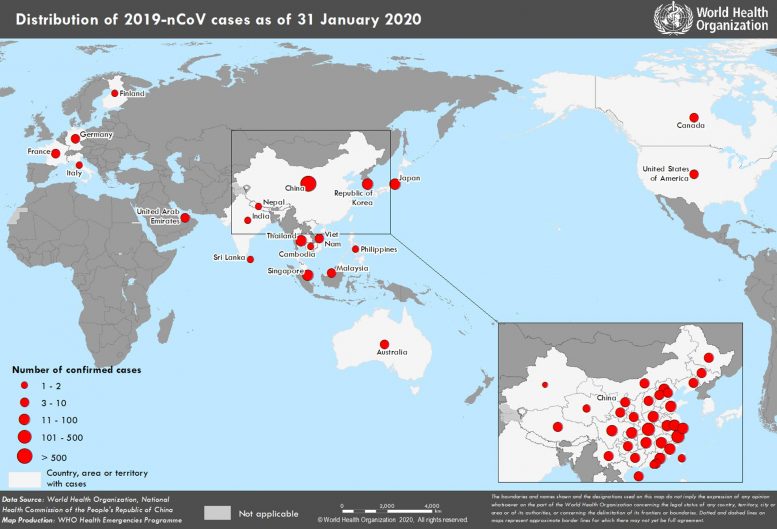
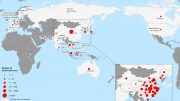
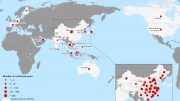
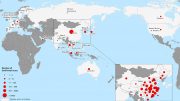
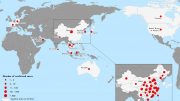
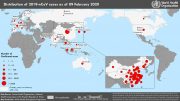
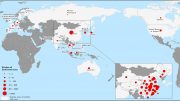
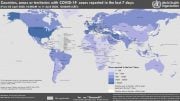
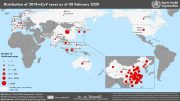
You have 1 case in Sweden too, you don’t have Sweden on list.
Please see the note under the table.
Is this really released by the WHO? Its the worst plot ever. How can you visually tell the difference between 3-10 and 11-100. It should be colour coded in addition to size. Red for dead? Looks a bit sensationalist to me. Get some data analytics people involved. Also where is the correlation of the data versus outside temperature in each country? I bet there is a correlation. Thats why its only in the northern hemisphere.